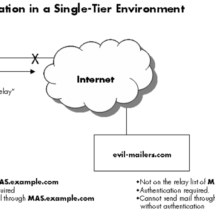In today’s world, software development is one of the most in-demand sectors in the IT industry. Companies worldwide require specialized solutions for process automation, workflow optimization, and productivity enhancement. More and more businesses are also implementing innovative solutions in various sectors, such as the online entertainment industry, as seen in sites like Fortune Ox 777 Slot. In this article, we will explore the key stages of software development and the current trends shaping the industry.
Stages of Software Development
The process of creating software involves several key stages that ensure the successful execution of a project from idea to final product.
Requirements Gathering and Analysis
At the initial stage, it is important to accurately determine the goals and objectives the software must fulfill. Collaboration with the client plays a crucial role, as it is necessary to take into account all their needs and preferences. Specialists conduct market research and analyze potential solutions to choose the best strategy.
Design
Once the requirements are gathered and analyzed, the design phase begins. During this stage, developers create the software architecture, define database structures, and design the user interface (UI/UX). It is essential to ensure that the product is intuitive and user-friendly for the end-users.
Programming
Programming is the central and one of the most labor-intensive parts of the software development process. During this phase, developers write the code using selected programming languages such as Python, Java, C++, JavaScript, and others. The programming process involves creating the application’s logic, implementing features, and integrating external services. High-quality code must be maintainable, readable, and scalable to allow for future modifications and new features.
Developers are typically divided into frontend and backend specialists. Frontend developers are responsible for creating the user interface, ensuring intuitiveness and ease of use, while backend developers handle the internal system logic, including data processing and interaction with databases. Additionally, programming can involve using frameworks and libraries that accelerate development and simplify the implementation of complex features such as authorization, payment processing, or API integrations.
Testing
After programming is completed, the testing phase begins. Its goal is to identify bugs and errors that may negatively impact the product’s performance. Several types of testing exist, including functional, load, and regression testing. This process ensures that the product works correctly and meets the initial requirements.
Deployment and Maintenance
When the product is ready, it is deployed for use. It is essential to carry out the deployment process properly and integrate it with existing systems. After the launch, the maintenance phase begins, which includes updates, bug fixes, and adding new features as needed.
Modern Trends in Software Development
Software development is constantly evolving, with new technologies and methods emerging each year that change the approach to creating software. Here are some key trends influencing the industry:
Artificial Intelligence and Machine Learning
Artificial Intelligence (AI) and Machine Learning (ML) are becoming increasingly sought-after in software development. These technologies allow companies to automate processes, improve user interaction through chatbots and predictive analytics, and create intelligent business solutions.
Cloud Technologies
Cloud technologies also play a central role in software development. Using cloud platforms such as AWS, Google Cloud, and Microsoft Azure enables scalable and accessible solutions for businesses of all sizes. Cloud technologies significantly reduce infrastructure costs and provide secure data storage.
Microservices-Based Software Development
Microservice architecture is becoming a popular alternative to monolithic systems. It allows developers to divide an application into independent modules, simplifying their maintenance and updates. Each microservice performs a specific function and can operate independently, making the system more flexible and scalable.
DevOps and Process Automation
DevOps is an approach that combines software development and IT operations. Through the use of automated testing, build, and deployment processes, companies can accelerate the release cycle and improve product quality. This method bridges the gap between developers and system administrators, ensuring closer collaboration and faster problem-solving.
Cybersecurity
With the growing number of cyberattacks, cybersecurity has become one of the most critical aspects of software development. Developers are paying increasing attention to protecting user data and systems from external threats. Modern applications undergo mandatory security checks at all stages of development to minimize risks.

















